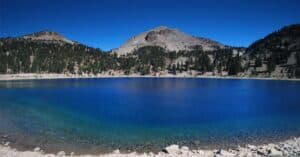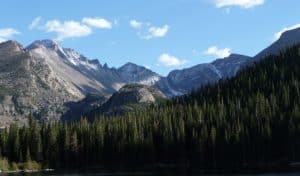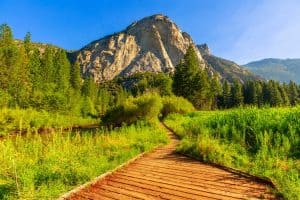Lassen Volcanic National Park Things To Do – When you think of Lassen Volcanic National Park, you imagine splattering mud, steaming sulfur vents, and other hydrothermal features that show the earth is alive. Lassen Peak, Lassen Volcanic National Park’s signature volcano, last erupted in 1914, with continued outbursts three years later. Thankfully, it is now dormant, so the overlooks and trails provide you with access to the volcano to learn about it as well as wander around its sparkling lakes and dense woods.
There are a variety of things to do at Lassen National Park, whether you’re camping for the weekend or taking a day trip or a road trip. You could choose to marvel at the steaming hydrothermal features located at the Bumpass Hell Trail or Boiling Springs Lake. Climb atop a cinder cone, take in the painted dunes, spend a night at St Bernard Lodge.
Lassen Volcanic National Park Things To Do
If you are into more strenuous activities, you could hike Lassen Peak Trail and look at the pits and craters. Into water sports and activities? Check out Lake Almanor, Cold Boiling Lake, or Summit Lake. You could also take time out to admire the icy blue waters of Lake Helen.
Alternatively, you could choose to camp under the red firs in Lassen National Forest to stare at the star-studded night sky at any of the eight campgrounds in the park. You can also drive the elevated curlicues of Highway 89. If you’re a fan of horses, you can ride horses and, after a long ride, soak in one of the hot spring pools at Drakesbad Guest Ranch.
It just goes to show there are a plethora of activities to do all year-round at Lassen Volcanic National Park.
Non-Volcanic Activities at Lassen Volcanic National Park
While it is called Lassen Volcanic National Park, there are many more attractions than fiery volcanoes. You can enjoy its watery attractions as well. For example, you could choose to saunter through the wildflower meadows to waterfalls that are just perfect for hiking.
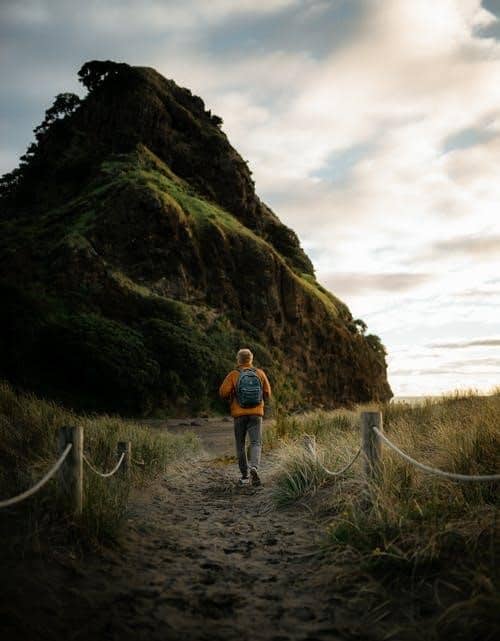
Take a hike down Mills Creek Falls, which is a 3.8-mile roundtrip. The hike takes you through a massive field of mule’s ears, with July being the best time to see the flowers bloom. Mills Creek Falls is the highest waterfall in the park at 75 feet, and you can start the trail at the Southwest campground.
Further north along the Lassen Park Highway, you can hike on the Kings Creek Falls, a 2.4-mile round trip. Hiking on this trail will lead you through a meadow that descends by Kings Creek to a 50-foot high cataract in the canyon.
Camping In Lassen
If you missed out on your summer vacation but still want to enjoy Lassen Volcanic National Park, you can do so in July. The great thing about July at Lassen is that the park is typically uncrowded, so you don’t have to worry about getting camping reservations for about half of its campsites. The camping season at Lassen is unusually short, from late June to September, because snow can take a while to melt at a higher elevation. When camping at Lassen, always pack warm gear as nights dip below freezing, even in the summer.
There are eight camps to choose from in the park, and they all offer different characters catering to various types of campers. The most famous camp with families is Manzanita Lake, as it provides the most amenities. Summit Lake campgrounds are also popular as they are two separate areas for those looking to swim in the calm lake comfortably.
If you are a camper who wants a car-free setting, you can head over to the Southwest Walk-In Camp with its 21 sites. It simply requires a short walk from the parking lot. You can hike off to Mill Creek Falls from this camp, and Brokeoff Mountain’s trailhead is not far off.
For campers who want a bit more remoteness, Juniper Lake, Warner Valley, and Butte Lake offer that. Each of these camps lies at the end of a road that doesn’t connect to the main road. Kayakers will be drawn to the Juniper Lake campground as it is just a few steps away from the water.
Sulphur Works
You could also choose to visit the colorful sulfur works. The former sulfur mine has easy access coupled with a lot of geothermal activity. It is on the right, near the main road. Picture steam rising to the sky with clay minerals splashing a red, orange, and yellow palette across what is a barren andesite rock. You can take a walk on the short path that loops around odorous steam vents (prepare to smell rotten eggs), rumbling fumaroles, and, of course, bubbling mud pots.
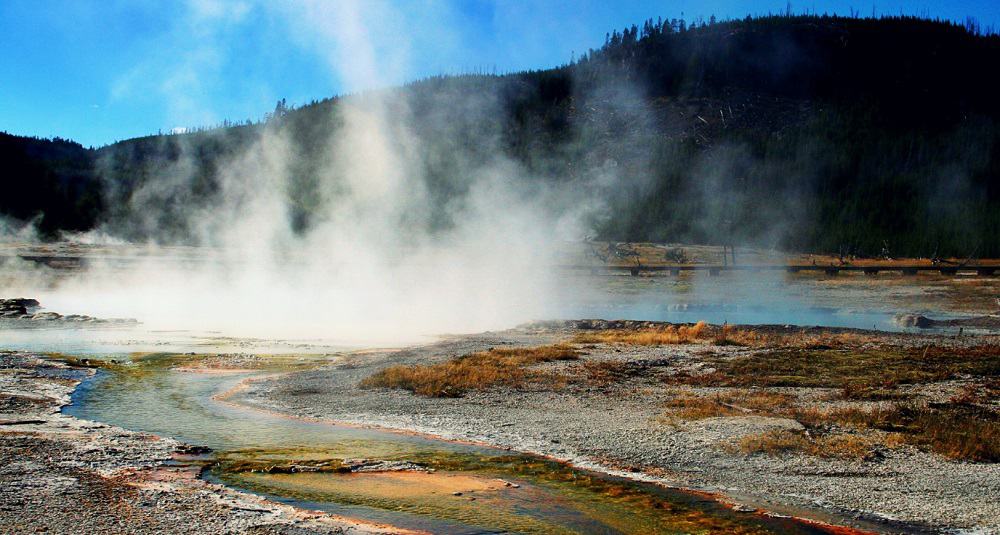
The biggest of the mud pots stretches about five feet across and is next to the sidewalk. The former mine had a long commercial history before becoming an integral part of the Lassen Volcanic National Park. It began operation in 1865 under the helm of an Austrian businessman; however, when sulfur demand slowed, operation switched to tourism. It then became Supan’s Springs, where just about anyone could go to have a nice mineral bath. Its popularity skyrocketed by 1941, including a lunchroom, bathhouse, large restaurant, and gas station.
Visiting Lassen In The Winter

You can also visit Lassen Volcanic National Park during the winter and spring. It is a popular backcountry snowboard and ski mountaineering destination. The slopes are so easy that even newbies can put on a pair of snowshoes to enjoy the beauty of Lassen covered in snow. The roads are closed during the winter; however, the north entrance at Manzanita Lake and the south entrance by Kohm Yah-mah-nee Visitor Center have marked snowshoe trails.
You could choose to bring your snowshoes to set off on your own. Alternatively, you could come for a park ranger-led snowshoe walk, typically offered on the weekends. Cross country skiers can enjoy the snow-covered park road, gliding to Lassen’s geothermal features.
Stargazing In Lassen
Lassen National Park can get quite dark at night. You can enjoy it any time or go to the Dark Sky Festival, usually held in late July or early August. The festival is three days of astronomy and stargazing activities. You can enjoy constellation tours and solar scope viewing alongside demonstrations and discussions from the Astronomical Society of the Pacific and NASA. Children can attend Junior Park Ranger Astronomy to learn about constellations, planets, stars, and engage in Night Explorer activities.
If you don’t visit Lassen during July or August, don’t think you’ve missed out on any night sky activities. During the summer, rangers hold astronomy programs on both sides of the park—the Bumpass Hell parking area on certain Saturdays and the Devastated Area every Wednesday night.
You should dress warmly when coming to these events as night temperatures can drop to freezing even in the summer.
Drakesbad Guest Ranch

You can choose to swim, dine and spend the night at the historic Drakesbad ranch. It is a 1900 ranch that provides snug lodgings in the southeast part of the park. Staying here gives you all the perks you can think of and some that you might not have considered. You can get guided trail rides, massage services, a friendly bar, and a restaurant to cool off after a hike.
The rustic atmosphere is appealing and bolstered by the lodge’s remote location. Rates typically include lodging and meals, which are extremely lux by the environment’s standards.
Perhaps the ranch’s most attractive feature is its hot spring pool, known as Drake’s Bath. The water temperature is cool enough during the day for a bit of swimming; however, the natural hot water at night becomes a giant hot tub. Anyone can make reservations for the pool; you don’t have to be an overnight guest. You have to make dinner reservations for that night.
Manzanita Lake
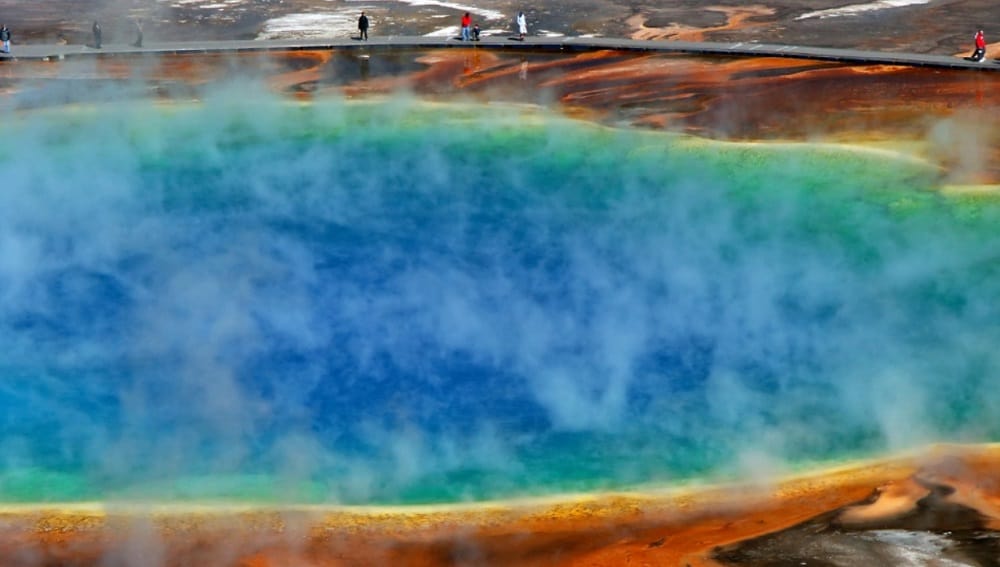
Manzanita Lake has to be Lassen Volcanic National Park’s most photographed lake. It is also the centerpiece of the park’s central visitor area. There is a lot to do at the lake: you could swim, rent kayaks to go out on the water, rent a cabin, go on any ranger-led programs, stay at the campground or even visit the camp store. You can also choose to hike the 1.6-mile trail that encircles the lake. This trail is perfect for children that love to explore.
If you love to witness incredible scenery, you can take advantage of the beautiful vantage points located on the north side of the lake. Take some time out to see the period photographs of the 1914 eruption at the small museum. The campground at Manzanita Lake has 170 sites with all campground amenities: flush toilets, showers, and a coin-operated laundry. You can even come without camping gear if you want to pack light as you can rent all that you need. Want something bigger? You can stay in an assortment of bunkhouses and tidy cabins.
Exploring Lassen Peak
The summit of Mt Lassen Peak stands at 10,457 feet. The mountain is almost treeless because, about a century ago, violent eruptions flattened the land for miles. As stated earlier, the flare-ups began in 1914; however, the largest didn’t happen till a year later, with steaming gasses and massive mudslides accompanying it.
Since the lake is at a high elevation, it often has a cap of ice and snow well into the midsummer. This combination gives the lake its icy blue hue. For those looking for a beautiful family picnic spot, the east side of the lake stands out for its beauty. If you decide to hike the volcano, you should prepare for company, mainly if you go during the summer. The hike up the volcano is difficult but not too technical, so a family with energetic kids should be able to do it.
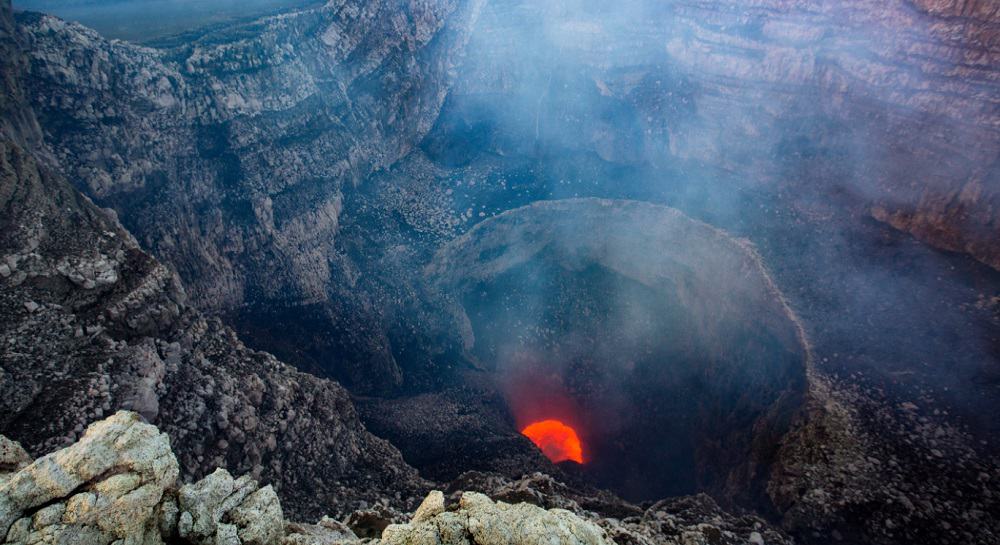
It is best to start very early to beat the heat. You should also wear sunhats and carry a lot of water. The Lassen Peak trail begins with an easy grade through the mountain whitebark pines and hemlock; however, the terrain gets steeper as soon as the trees are behind you. There are a couple of switchbacks that lead to Lassen’s first summit. If you want to venture further to the peak, you need to continue a bit farther.
Bumpass Hell
Bumpass Hell has the highest concentration of hydrothermal features in the park. The “hell” part of Bumpass Hell is named because there are 16 acres of mud pots, boiling springs, roaring fumaroles, and hissing steam vents. It is called Bumpass Hell because an early pioneer known as Kendall Vanhook Bumpass accidentally discovered these hydrothermal features back in 1860. This discovery was due to him breaking his leg when he stepped into a boiling pool.
Fortunately, today’s visitors don’t have to worry about that. There is a well-marked, easy trail and only 3 miles round trip. A shorter trail points to stunning peaks along the route. These peaks are the ruins of Mount Tehama, a massive volcano that erupted 500,000 years ago.
You are likely to smell Bumpass Hell before you see it as you will perceive the pervasive smell of rotten eggs as the natural gases spew out, and thanks to the bubbling pools and mud pots, you can also hear it. The trail at Bumpass Hell is a boardwalk trail where you can walk safely without worrying about ending up like Mr. Bumpass.
Best Death Valley Hikes and Tips for Hiking Death Valley
Best Time to Visit Sequoia National Park
Kings Canyon National Park Camping
Best Time to Visit Joshua Tree National Park
Best Time to Visit Death Valley
Yosemite Hiking Trails
Best Time to Visit Yosemite
Best Time to Visit Lake Tahoe
Lassen Volcanic National Park Camping
Lassen Volcanic National Park Things To Do
Best Time to Visit Crater Lake
Crater Lake Camping
The Best Crater Lake Hikes

